The Importance of Proper Storage for Dangerous Goods
Date Posted:6 May 2024
By investing in proper storage infrastructure, training, and safety protocols, businesses can not only comply with regulations but also demonstrate their commitment to responsible and sustainable practices.
In a world where hazardous materials are part of everyday life, the importance of proper storage for dangerous goods cannot be overstated. Whether it's chemicals, flammable substances, or radioactive materials, mishandling these items can lead to catastrophic consequences. In Australia, where industrial activities are prevalent and safety standards are paramount, ensuring the correct storage of dangerous goods is not just a legal requirement but a moral obligation. In this blog, we'll delve into why proper storage is crucial, the risks of improper handling, and the measures that must be taken to mitigate these risks effectively.
Understanding Dangerous Goods:
Before we dive into the importance of proper storage, it's essential to understand what constitutes dangerous goods. In Australia, dangerous goods are classified according to their chemical and physical properties, which can pose risks to people, property, and the environment. These goods include explosives, gases, flammable liquids, flammable solids, oxidizing substances, toxic substances, infectious substances, radioactive materials, and corrosive substances. Each category carries its own set of hazards, requiring specific storage conditions to ensure safety.
The Importance of Proper Storage:
Mitigating Risks: Proper storage of dangerous goods is essential for mitigating the risks associated with their handling and transportation. By storing these items in designated areas equipped with the necessary safety features, such as ventilation systems, fire suppression systems, and containment measures, the likelihood of accidents and incidents is significantly reduced.
Protecting Human Health: The primary goal of proper storage is to protect human health and safety. Exposure to hazardous materials can lead to acute and chronic health effects, ranging from respiratory problems to cancer. By storing dangerous goods securely and implementing strict access controls, the risk of exposure to workers, nearby residents, and the general public is minimized.
Preventing Environmental Contamination: Improper storage of dangerous goods can result in environmental contamination, polluting soil, waterways, and the air. Spills, leaks, and emissions from improperly stored chemicals can have devastating consequences on ecosystems and biodiversity. Proper storage practices, including secondary containment systems and spill response protocols, are vital for preventing environmental disasters.
Compliance with Regulations: In Australia, the storage of dangerous goods is governed by strict regulations and codes of practice, such as the Australian Dangerous Goods (ADG) Code and various state and territory legislation. Compliance with these regulations is not optional but mandatory for businesses handling hazardous materials. Proper storage ensures adherence to these legal requirements, avoiding costly fines, legal liabilities, and reputational damage.
Safeguarding Property: In addition to protecting human health and the environment, proper storage of dangerous goods also safeguards property and infrastructure. Flammable substances, for example, pose a significant fire hazard if not stored correctly. By storing them in fire-resistant cabinets or designated areas away from ignition sources, the risk of fire-related damage is minimized, protecting assets and facilities.
The Risks of Improper Storage:
The consequences of improper storage of dangerous goods can be severe and far-reaching. Some of the risks associated with inadequate storage include:
Fire and Explosions: Flammable liquids and gases, if not stored properly, can ignite and cause fires or explosions, resulting in property damage, injuries, and fatalities.
Chemical Releases: Improper storage can lead to chemical releases, such as spills or leaks, which can contaminate soil, waterways, and groundwater, posing risks to ecosystems and human health.
Toxic Exposure: Exposure to toxic substances due to improper storage can result in acute and chronic health effects, including respiratory problems, neurological disorders, and cancer.
Environmental Damage: Environmental damage caused by spills, leaks, or emissions from improperly stored hazardous materials can have long-term ecological impacts, affecting biodiversity and ecosystem health.
Legal Consequences: Businesses found in violation of regulations pertaining to the storage of dangerous goods may face legal consequences, including fines, penalties, and even criminal charges.
Mitigating Risks through Proper Storage Practices:
To mitigate the risks associated with the storage of dangerous goods, businesses must adhere to best practices and implement effective safety measures. Some key practices include:
Segregation: Store incompatible substances separately to prevent chemical reactions and minimize the risk of fires, explosions, or spills.
Ventilation: Ensure proper ventilation in storage areas to prevent the buildup of flammable vapors and toxic fumes.
Containment: Use secondary containment systems, such as bunds or spill pallets, to contain spills and leaks and prevent them from spreading.
Labeling: Clearly label containers with the appropriate hazard symbols, chemical names, and safety information to facilitate safe handling and storage.
Training: Provide comprehensive training to employees on the safe handling, storage, and disposal of dangerous goods to minimize the risk of accidents and incidents.
Conclusion:
Proper storage of dangerous goods is not just a legal obligation but a fundamental responsibility to safeguard human health, protect the environment, and ensure public safety. By adhering to regulations, implementing best practices, and prioritizing safety, businesses can mitigate the risks associated with hazardous materials and contribute to a safer and more sustainable future for all.
In Australia, where safety standards are rigorous and enforcement is strict, there is no room for compromise when it comes to the storage of dangerous goods. By investing in proper storage infrastructure, training, and safety protocols, businesses can not only comply with regulations but also demonstrate their commitment to responsible and sustainable practices. Ultimately, the importance of proper storage cannot be overstated—it is the foundation of a safer and more secure workplace and community for generations to come.




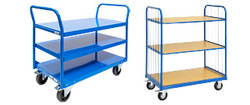
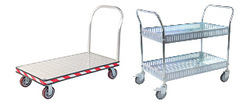

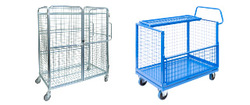
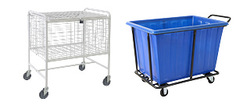



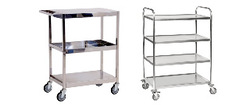



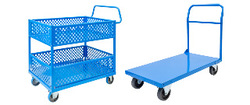
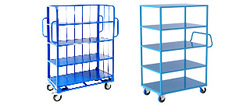
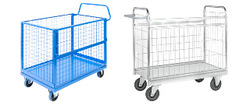
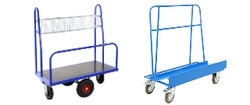







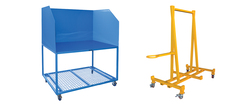











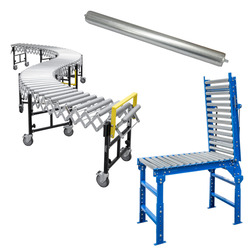





















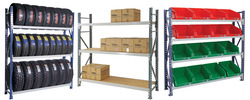
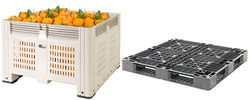




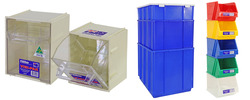



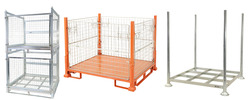
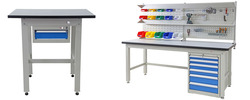























 Trolleys / Hand Trucks
Trolleys / Hand Trucks 2 Tier Trolleys
2 Tier Trolleys 3 Tier Trolleys
3 Tier Trolleys Aluminium Trolleys
Aluminium Trolleys Appliance & Hand Trucks
Appliance & Hand Trucks Cage Trolleys
Cage Trolleys Cleaning Carts & Trolleys
Cleaning Carts & Trolleys Construction Trolleys
Construction Trolleys Dollies
Dollies Foldable Trolleys
Foldable Trolleys Hospital Trolleys
Hospital Trolleys Laundry/Linen Trolleys
Laundry/Linen Trolleys Load Skates & Tow Tugs
Load Skates & Tow Tugs Mail / Office Trolleys
Mail / Office Trolleys Multi Purpose Trolleys
Multi Purpose Trolleys Multi-Tier Shelf Trolleys
Multi-Tier Shelf Trolleys Order Picking Trolleys
Order Picking Trolleys Panel Cart Trolleys
Panel Cart Trolleys Platform Trolleys
Platform Trolleys Powered Trolleys
Powered Trolleys Shopping Trolleys
Shopping Trolleys Stainless Steel Trolleys
Stainless Steel Trolleys Tool Trolleys
Tool Trolleys Utility Carts
Utility Carts Warehouse Trolleys
Warehouse Trolleys Custom Trolleys
Custom Trolleys Lifting Equipment
Lifting Equipment Forklift Attachments
Forklift Attachments Jib Attachments
Jib Attachments Lifting Hoists & Pallet Hooks
Lifting Hoists & Pallet Hooks Manual Stackers & Lifters
Manual Stackers & Lifters Pallet Jacks
Pallet Jacks Pallet Lifters
Pallet Lifters Pallet Rotators & Dispenser
Pallet Rotators & Dispenser Powered Pallet Trucks & Electric Lifters
Powered Pallet Trucks & Electric Lifters Scissor Lift Trolleys and Tables
Scissor Lift Trolleys and Tables Conveyor Equipment
Conveyor Equipment Conveyor Frames
Conveyor Frames Conveyor Stands
Conveyor Stands Roller Conveyors
Roller Conveyors Skate Wheel Conveyors
Skate Wheel Conveyors Access Equipment
Access Equipment Container & Yard Ramps
Container & Yard Ramps Step Stools & Ladders
Step Stools & Ladders Work Platforms & Crane Cages
Work Platforms & Crane Cages Drum Handling
Drum Handling Drum Storage & Bunding
Drum Storage & Bunding Drum Trolleys & Lifters
Drum Trolleys & Lifters Forklift Drum Handling
Forklift Drum Handling Containment & Spillage
Containment & Spillage Aerosol Cans Storage Cages
Aerosol Cans Storage Cages Bunded Pallets & Storage
Bunded Pallets & Storage Corrosive Goods Storage Cabinets
Corrosive Goods Storage Cabinets Flammable Liquid Cabinets
Flammable Liquid Cabinets Forklift Gas Storage Cages
Forklift Gas Storage Cages Gas Cylinder Storage
Gas Cylinder Storage Site Storage
Site Storage Spill Kits
Spill Kits Stillage Cages
Stillage Cages Waste Handling
Waste Handling Bin Lifters & Tippers
Bin Lifters & Tippers Plastic Waste Bins and Carts
Plastic Waste Bins and Carts Steel Waste and Tipping Bins
Steel Waste and Tipping Bins Storage Equipment
Storage Equipment 750 Series Cage Configurations
750 Series Cage Configurations Heavy Duty Cabinets & Benches
Heavy Duty Cabinets & Benches Heavy Duty Shelving
Heavy Duty Shelving Mega Bins & Pallets
Mega Bins & Pallets Packing Benches
Packing Benches Pallet Racking Accessories
Pallet Racking Accessories Parts Trays & Stor-Pak Bins
Parts Trays & Stor-Pak Bins Pegboard & Louvre Panels
Pegboard & Louvre Panels Plastic Bins
Plastic Bins Plastic Handling Solutions Bins
Plastic Handling Solutions Bins Plastic Pallets
Plastic Pallets Stack & Nest Bins
Stack & Nest Bins Storage Cages
Storage Cages Workplace Equipment
Workplace Equipment Workbenches
Workbenches Modular Workbenches
Modular Workbenches Electric Height-Adjustable Workbenches
Electric Height-Adjustable Workbenches Floor Matting
Floor Matting Industrial Weighing Scales
Industrial Weighing Scales Pallet Wrapping & Packaging Machinery
Pallet Wrapping & Packaging Machinery Ramps
Ramps Stationery Cupboards
Stationery Cupboards Storage and Stillage Cages
Storage and Stillage Cages Tool Trolleys
Tool Trolleys Tooling Cabinets
Tooling Cabinets Wheelie Bins
Wheelie Bins Workshop Equipment
Workshop Equipment Safety Equipment
Safety Equipment Gloves and PPE
Gloves and PPE Pallet Rack Post Protectors
Pallet Rack Post Protectors Safety Barriers & Bollards
Safety Barriers & Bollards Safety Knives & Cutters
Safety Knives & Cutters Signs and Traffic Supplies
Signs and Traffic Supplies Tool & First Aid Boxes
Tool & First Aid Boxes Construction Equipment
Construction Equipment Concrete Equipment
Concrete Equipment General Site Equipment
General Site Equipment Lifting Equipment
Lifting Equipment Site Storage
Site Storage Waste
Waste 










